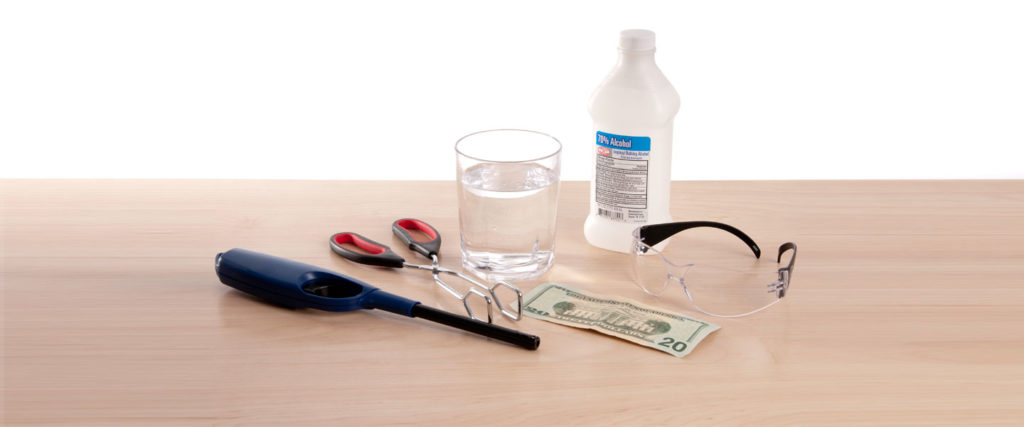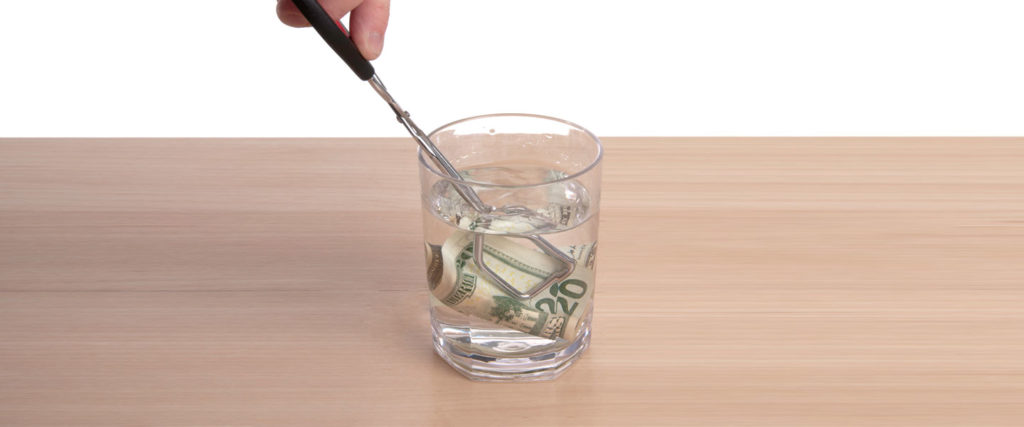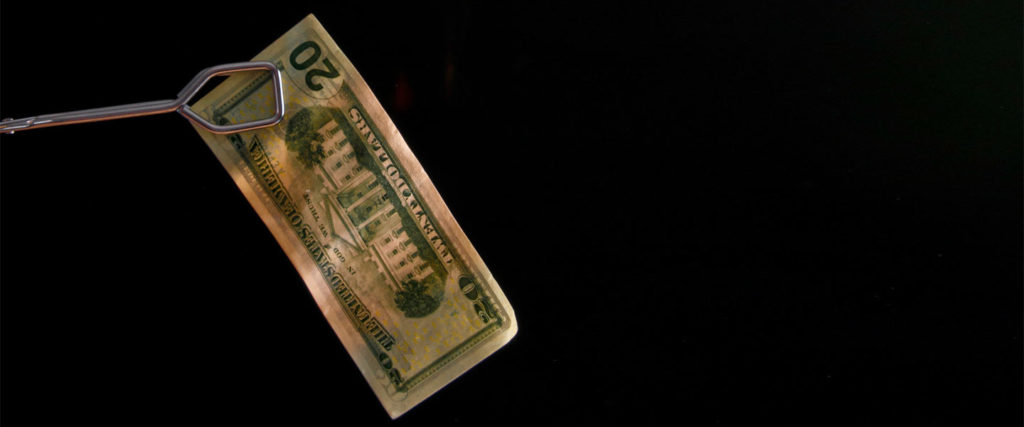Money in a Blender - A Cash Smoothie
It’s true . . . some money is magnetic. Vending machines will sound an alarm if an ordinary piece of paper is inserted into the […]

Do you have money burning a hole in your pocket? It’s probably not a wise idea to soak a $20 bill in a flammable liquid and set it on fire, but that’s what you’ll have to do in this science demonstration. Sure, you could just use a $1 bill, but then you won’t sweat as much.

Start by preparing a water-alcohol mixture by combining 3 ounces (90 mL) of 70% rubbing alcohol with 1 ounce (30 mL) of water. Make sure to stir the mixture thoroughly.

Rule #1: Never use your own money. Borrow a $20 bill from your friend. If you can get away with this, you have incredible skills of persuasion. Otherwise, cough up your own money.

Dip the bill into the mixture of water and rubbing alcohol using the tongs, and make sure the bill gets completely soaked.

Remove the bill using the tongs and gently shake off any excess liquid.

Move the water-alcohol mixture to a safe place (away from the area where you are going to light the bill on fire).

Hold one end of the bill with tongs and light the bottom of the bill with a lighter. The bill will look like it’s burning, but it shouldn’t burn (famous last words). When the flame is completely extinguished, it’s safe to touch the money. You’ll find that the money is even cool to the touch.
By now you’ve probably guessed that the money will actually burn if you dip it into a pure alcohol solution. The secret, of course, is the addition of water to the mixture. The water from the water-alcohol mixture evaporates and absorbs much of the heat energy that is generated when you ignite the bill. The water is first heated to its boiling point and then vaporized by the heat of combustion from the burning alcohol. The evaporation of the water keeps the temperature below the ignition temperature of paper, which is 233oC or 451oF. If you read Fahrenheit 451, a novel by Ray Bradbury about book burning, you will recognize this famous temperature. If you reduce the amount of water in the mixture, the paper money is likely to char or even catch on fire.
Alcohol burns with an almost invisible blue flame. One trick is to add a little table salt to the water-alcohol mixture to give the flame a more yellowish color and make it more visible.
You can also try to change the ratio of rubbing alcohol to water to see how it affects the way the bill burns, but you’re likely to accidentally burn up your dollar bill.
WARNING! IMPORTANT SAFETY RULES
This demonstration should not be attempted without strict adult supervision.